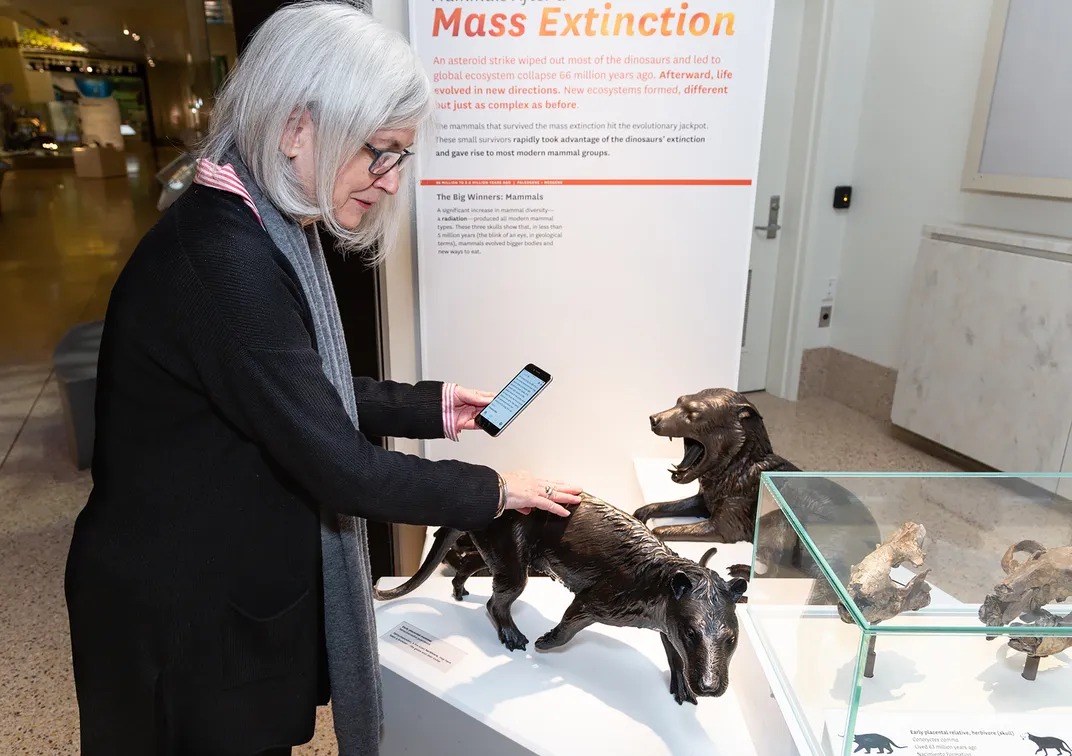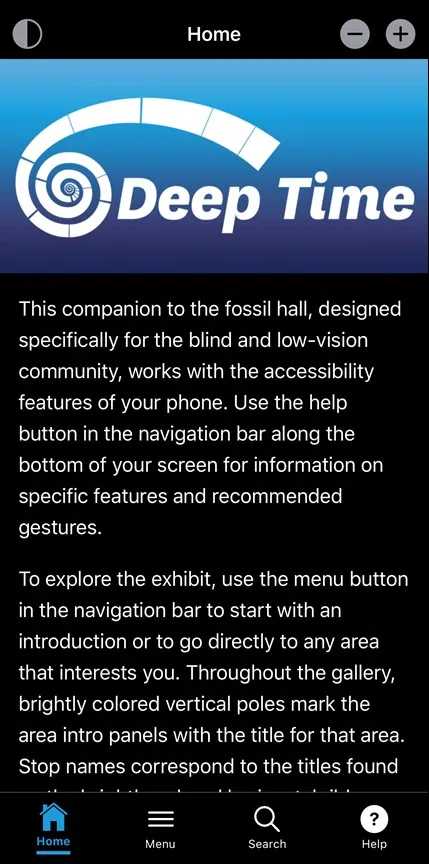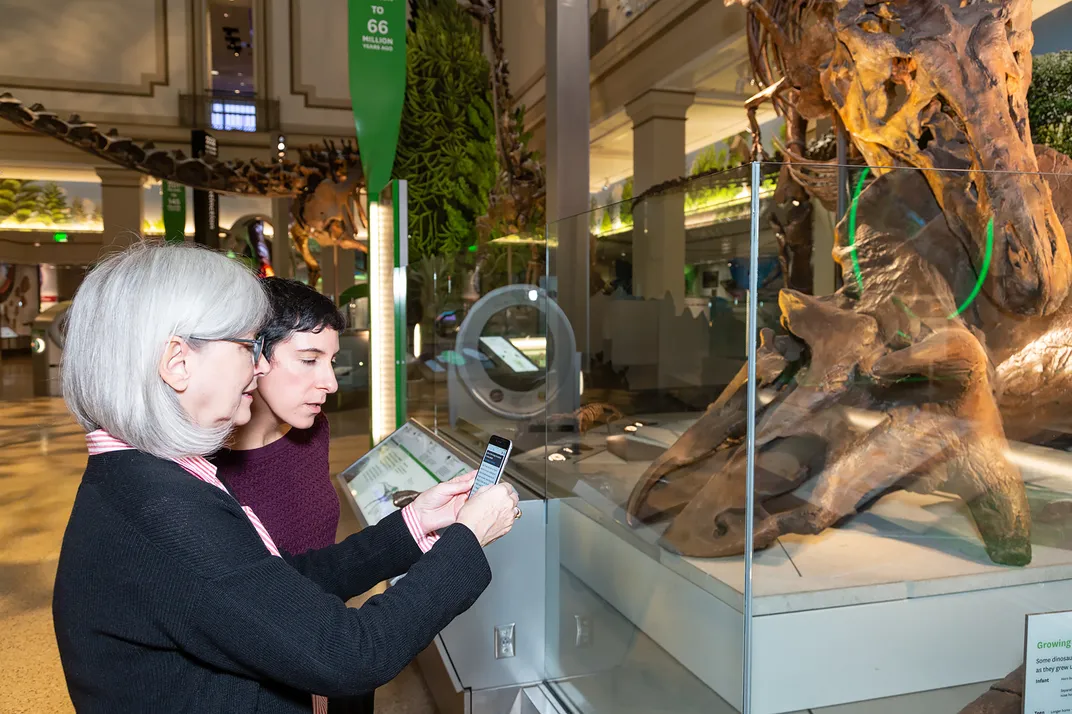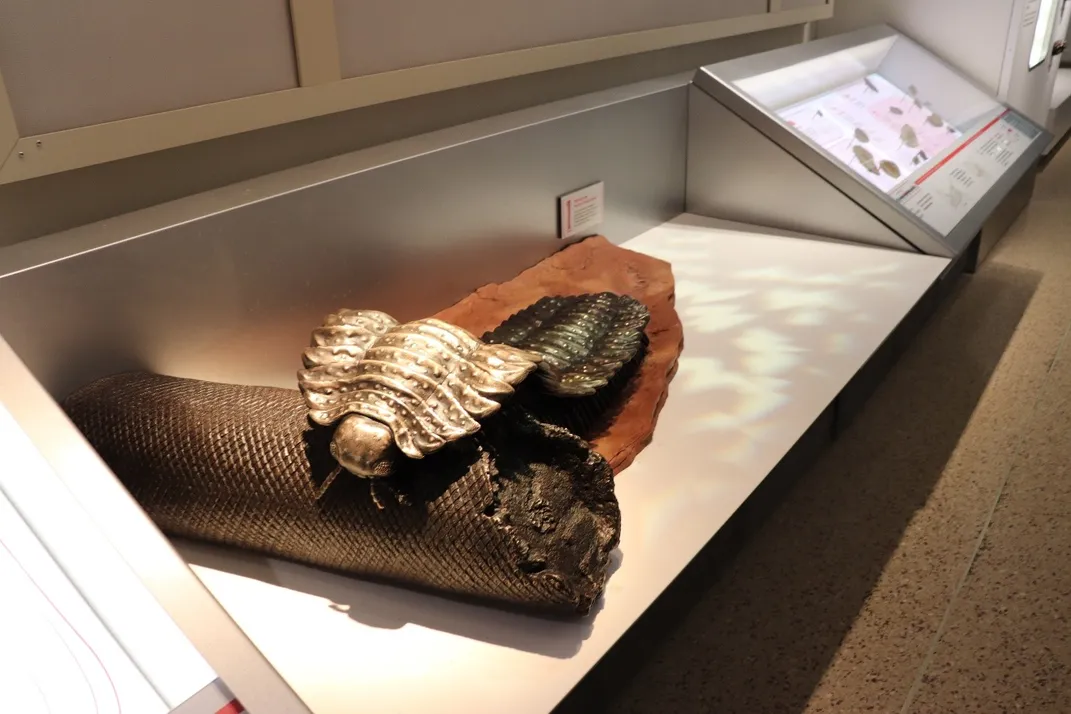NATIONAL MUSEUM OF NATURAL HISTORY
New App Takes Smithsonian Visitors Beyond Visuals
A new audio description app welcomes visitors to more autonomously explore the fossil hall.
/https://tf-cmsv2-smithsonianmag-media.s3.amazonaws.com/blogging/featured/NMNH-2020-00099.jpg)
It’s easy to get caught up in the visuals at the Smithsonian’s National Museum of Natural History. An African Bush Elephant towers over visitors in the rotunda while dinosaurs duel in the new “Hall of Fossils – Deep Time” and gems and metals glitter in the Hall of Geology, Gems and Minerals. But the museum’s mission is not about sights. It’s about connecting people to the richness of our world and its long history.
And a new audio description app does just that. The Deep Time Audio Description app — available for free on Android and iOS — welcomes visitors who are blind or have low vision to more autonomously explore the fossil hall. The app is the museum’s latest effort to welcome everyone to learn about how the past informs the present and future.
Choose your own adventure
The app presents “Deep Time” through a combination of descriptions of the displays and the corresponding scientific information. Users aren’t confined to a preset tour with a fixed number of stops. Instead, users can select any time period spanning 3.7 billion years of life on Earth to explore, each with compelling text and images with captions and descriptions of the pictures. Visitors can use the descriptions to curate their personal must-visit itinerary in advance or, once in the museum, to dive into whatever display catches their fancy.
And it doesn’t just describe the fossils. The app also describes the interactive activities, the 29 tactile displays and the videos, which include descriptive audio.

“The ‘Deep Time’ exhibit is immense, and it could be pretty daunting to go into that cavernous space when you can't see exactly what all is around you,” says Eric Bridges the executive Director of the American Council of the Blind who helped test the app and whose organization provided advice at multiple stages in the app’s development. “So being able to fire up the app and begin to learn about the various areas within “Deep Time” — being able to get both high-level descriptions and a certain level of granularity — made for a more complete experience. The app is the first of its kind that I've witnessed at a major museum.”
The app is designed so that users who are blind or have low vision can rely on their phone’s pre-established accessibility settings for screen reader use. Buttons within the app can enlarge the text and toggle between light and dark backgrounds. This allows users to go at their own speed and to be comfortable with how the information is presented. Using the flexibility of a screen reader rather than a pre-recorded tour provides many more options for users to explore their interests without taking up excessive memory space. They can select specific areas of “Deep Time” through the main menu, take the tactile-only tour or simply search for concepts and specimens that interest them.
“Audio descriptions, generally speaking, lead you through a very linear path and don’t necessarily allow you the freedom to just go and do whatever you want,” Bridges says. “The Deep Time Audio Description app allows you to do that because you're not tethered to a recording or anything.”

Making a welcoming app
Museum staff were faced with the challenge of creating compelling descriptions that capture the variety and depth of stories that the fossils in the hall represent. The stories feature ancient and unfamiliar plants, monsters of the sea, dinosaurs and other creatures big and small that are unlike anything we encounter today.

“With fossils in particular, the further back in time you go, the weirder things seem, so there's less of a frame of reference for people to latch on to,” says Juliana Olsson, the exhibit writer and editor who wrote text for the exhibit and app. “The other tricky element was figuring out how much interpretation and context to give in each description.”
Museum staff reached out to potential users who are blind or have low vision through personal interviews and a nationwide survey. They also coordinated focus groups and tests with real users in the hall. This feedback was essential to making the app a functional tool that is easy to use and delivers what users want.
Olsson and others, for example, used the feedback to tailor the descriptions for the app. She detailed specific parts of the fossils — like teeth, claws and jaws — while also explaining what scientists have learned from observing those features, such as what a species ate. The descriptions use facts, details and comparisons to create a compelling, coherent image of even the most alien of the ancient creatures.

The approach worked. During testing, a visitor who was blind used the app to learn how scientists use fossilized insect tracks to uncover the size of ancient insects. While many visitors only pause to notice the 6-foot-long, bronze millipede, the user ran his hands over the tracks under it, then called over his friend to discuss the underlying science.
“We want every visitor coming to the National Museum of Natural History to have the potential to have the same experience as anyone else, to have access to the same content and to have the ability to enjoy all of the years of hard work from our scientists and our exhibit developers,” says Samantha Barry, the visitor experience and accessibility manager for the museum.
Planning your perfect visit
The app supplements the other ways the museum encourages non-visual engagement. Visitors who are blind or have low vision can also schedule guided tactile or descriptive tours of the museum’s exhibitions, including the fossil hall. Or they can use the Aira app to connect to human and AI agents who can help them navigate the museum and verbally describe the various displays.
More details about the museum’s accessibility offerings are available online. Please call the accessibility hotline 202-633-5238 or email [email protected] to learn more about accessibility options, schedule a visit with special accommodations or provide suggestions or feedback about the museum’s accessibility services.
Related stories:
Old Fossils, New Meanings: Smithsonian Exhibit Explores the History of Life and What it Means for Our Future
Five Things You Shouldn’t Miss in the New Fossil Hall
The Experts Behind the New Fossil Hall Wrap Their Minds Around ‘Deep Time’
Try These Hands-on Activities in the Smithsonian’s New Fossil Hall
Smithsonian Puts Backstage Fossil Preparation Center Stage in its New Fossil Hall

